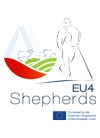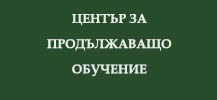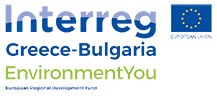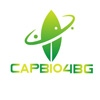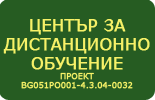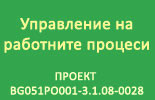Projects development and management
|
Course title: |
Projects development and management |
|
|
Course code: |
IFPDM |
|
|
ECTS: |
3 |
|
|
In-class hours |
Lectures: |
30 |
|
Laboratory work/Tutorials: |
15 |
|
|
Self-preparation hours |
Practical training: |
20 |
|
Other: |
10 |
|
|
Total hours: |
75 |
|
|
Language: |
English |
|
|
Study cycle: |
BSc, Master |
|
|
Semester: |
Winter, summer |
|
|
Faculty: |
Faculty of Economics |
|
|
Name of the lecturer(s): |
Prof. Ivan Penov, PhD |
|
|
Mode of delivery: |
Face-to-face, distance learning |
|
|
Prerequisites: |
Public Economics, EU funds and Programs |
|
|
Learning outcomes of the course unit: |
The course has two main parts. The first part concentrates on the logical frame approach and the grant projects. The two stages of the logical frame approach (1.analysis of the situation and 2. planning) are presented at the lectures. During the tutorials the students are separated into groups and design small grant projects. The second part concentrates on the cost-benefit approach and the investment projects. The investment projects design and indicators for the projects’ assessment are presented at the lecture. During the tutorials, the students are separated into groups and develop EXCEL models of investment projects. As illustration of the different project design approaches cases of implemented already projects are used. This course links the policy instruments and procedures for their implementation with the process of projects’ development and management.. |
|
|
Course contents: |
LECTURES 1. INTRODUCTION Course outline. European funds and programs 2. PROJECT CYCLE AND TYPE OF PROJECTS Project cycle. Project ideas. Capacity for project development. Grant scheme projects. Investment projects 3. LOGICAL FRAMEWORK APPROACH Information, data, and approaches for data collection. Analyzing the situation. Problem analysis. Stakeholder analysis. Analysis of objectives. Analysis of alternative strategies. Planning. Logframe matrix. Activities schedules. Resource and cost schedules. Development of the project. 4. MANAGEMENT OF GRANT PROJECTS Identifying marks and signs. Price offers and bidding procedures. Team. Organizing the activities. Proof materials for activities implementation. Acceptance protocols. Attendance lists. Pictures and video materials. Other proof materials. Interim and final reports. Activity reports: Counting the project participants, Reporting the conducted activities, Appendixes and presenting the proof materials, Problems related to the development and defending the activity reports Financial reports: Declaration of cost's eligibility, Request for payment, Summary financial statements, List of documents, Reporting full-time labor cost, Reporting part-time labor cost, Time sheets, Problems related to development and defending the financial reports Changes in the activities and the budgets: Eligible and ineligible changes, Notification letters, Letters of authorization. On spot checks by the program authorities 5. THE COST-BENEFIT APPROACH Financial analysis of costs and benefits. Economic analysis of costs and benefits. Positive and negative externalities. Secondary effects.Shadow Prices. The cost-benefit and logical framework approach. Determining the project's benefits: Measurable monetary benefits, Non-monetary benefits. Determining the project's cost. :Measurable monetary cost, Non-monetary cost. Indicators for assessment: Discounting, Net present value, Internal rate of return, Payback period, Profitability index.Financial evaluation of the project. Economic evaluation of the project 6. MANAGEMENT OF INVESTMENT PROJECTS Identifying marks and signs. Price offers and bidding procedures. Accounting and reporting the investment cost. On spot checks by the program authorities 7. ANALYSIS OF THE PROCEDURES FOR PREPARATION AND IMPLEMENTATION OF EU PROJECTS Analysis of the required documents. Analysis of the application and reports' procedures. Capacity for development and implementation of EU projects.
TUTORIALS PROJECT CYCLE AND TYPE OF PROJECTS Project cycle. Project ideas LOGICAL FRAMEWORK APPROACH Information, data, and approaches for data collection. Analyzing the situation. Planning. Development of the project THE COST-BENEFIT APPROACH Financial analysis of costs and benefits. Economic analysis of costs and benefits. Determining the project's benefits. Determining the project's cost. Indicators for assessment. Financial evaluation of the project. Economic evaluation of the project |
|
|
Recommended or required reading: |
European Commission. (2004). Aid Delivery Methods. Project Cycle Management Guidelines..http://ec.europa.eu/europeaid/infopoint/publications/europeaid/49a_en.htm. The Logical Framework Approach pp. 57-94 European Commission. (2008). Guide to Cost-Benefit Analysis of investment projects. Structural Funds, Cohesion Fund and Instrument for Pre-Accession. http://ec.europa.eu/regional_p... Project Appraisal in the Framework of the EU funds pp.17-24. An Agenda for the Project Examiner pp 25-68 |
|
|
Planned learning activities and teaching methods: |
The main part of the material in Project Development and Management is taught through lectures. The tutorials are organized as discussions combined with practical exercises with the aim the students to understand the logic of the two main approaches for project development logical framework and the cost-benefit approach. The students are asked to develop small projects using both approaches. |
|
|
Assessment methods and criteria: |
Participation in class discussions-10% Projects- 50% Final written exam- 40% |
|
 - Events on the occasion of the 80th anniversary of AU
- Events on the occasion of the 80th anniversary of AU

